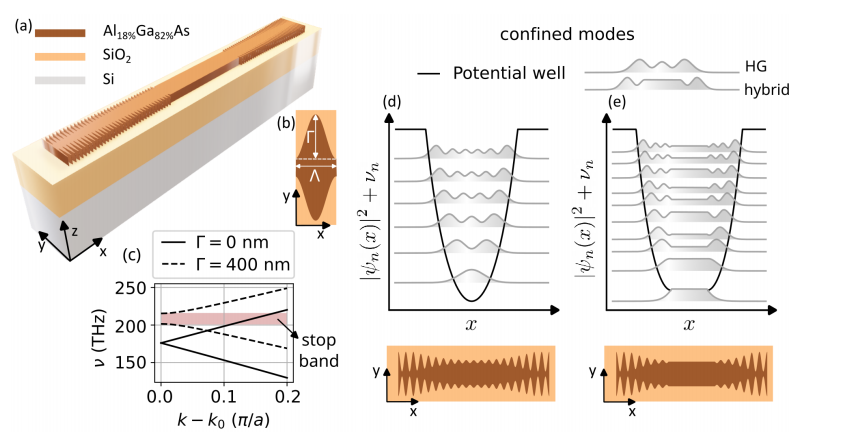
This paper presents a novel approach for dispersion engineering in AlGaAs-on-insulator (AlGaAs-OI) nanophotonic structures, specifically focusing on the integration of distributed Bragg reflectors (DBRs) to form a linear Fabry-Pérot resonator. The aim is to achieve customizable dispersion profiles in integrated optical circuits, particularly for nonlinear optical applications.
The authors use a shape-constrained inverse design technique to tailor the dispersion profile of these resonators, demonstrating the technique's effectiveness in both simulations and experiments. The design approach modifies the amplitude profile of the sinusoidal corrugation along the cavity to achieve the desired dispersion, addressing challenges in efficiently tailoring photonic bandgaps and optimizing light confinement.
Experimental results show good agreement with the theoretical predictions for the designed devices. These devices are constructed on an AlGaAs-OI platform, with high reflectivity and predictable dispersion profiles that are crucial for nonlinear operations such as frequency mixing. The study highlights the versatility of these designs for a variety of optical applications, including microcomb generation and nonlinear optics.
The paper also explores the transition from pure photonic crystal (PhC) cavities to hybrid PhC-Fabry-Pérot resonators, which combine the properties of both systems. The experimental results underscore the robustness of this design method, though some deviations from theoretical predictions were observed at higher frequencies, attributed to group velocity mismatches at the boundaries of the resonator sections.
In conclusion, the work demonstrates the successful application of a systematic inverse design method to achieve tailored dispersion profiles in nanophotonic resonators, with potential extensions to other materials and configurations for broader optical applications.
OMeda (Shanghai Omedasemi Co.,Ltd) was founded in 2021 by 3 doctors with more than 10 years of experience in nanpfabrication. It currently has 15 employees and has rich experience in nanofabrication (coating, lithography, etching, two-photon printing, bonding) and other processes. We support nanofabrication of 4/6/8-inch wafers.